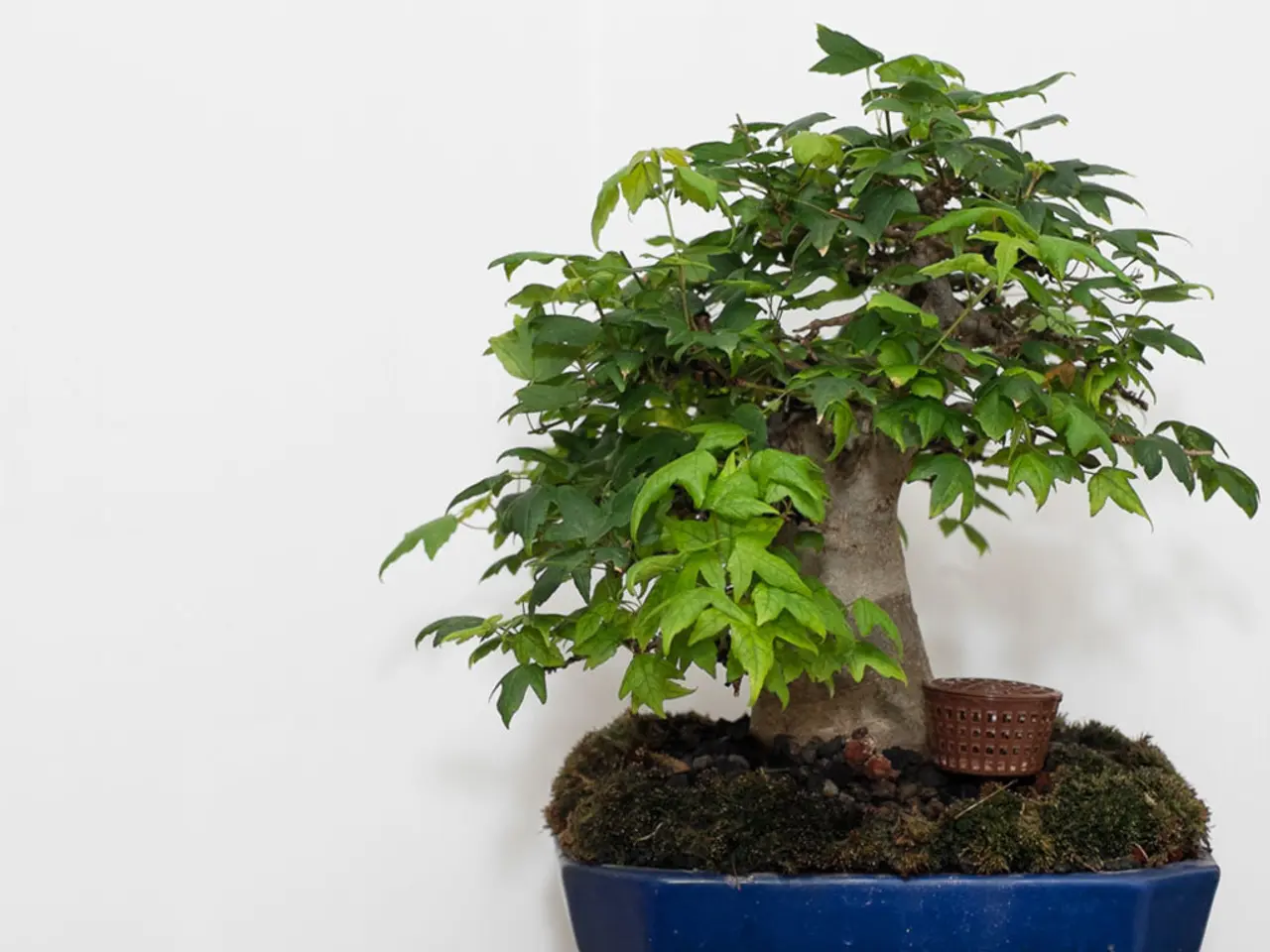Fast-growing Bonsai maintenance: Ensuring tree health and desired appearance through root pruning techniques
Pruning Bonsai Roots: A Guide for Fast-Growing Species
Bonsai enthusiasts know that pruning is a crucial part of maintaining a healthy and visually stunning tree. However, the process of root pruning, particularly for fast-growing species, requires a more careful and strategic approach. Here's a step-by-step guide to pruning roots effectively while ensuring the tree remains healthy and balanced.
Preparing for Root Pruning
Before you begin, gather your tools. Sharp bonsai shears, a root hook, and a clean workspace are essential. Sterilize your tools with rubbing alcohol to prevent infection, and work in a shaded, clean area to keep the tree comfortable.
Removing the Tree and Exposing Roots
Gently take the bonsai out of its pot. Use a root hook or chopstick to loosen and remove old soil, being careful not to damage delicate fine roots which are vital for nutrient uptake.
Assessing and Pruning Roots
Identify and remove thick, woody, circling, or dead roots, which appear dark or mushy. Healthy roots are firm and light-colored. Trim about 20 to 30% of the root mass typically. For fast-growing species, pruning can be more aggressive—one example shows removing up to 80% to encourage finer roots growth near the trunk, which better supports healthy foliage development.
Encouraging Fine Root Growth
Removing many thicker roots stimulates the growth of finer, more fibrous roots closer to the trunk, which enhances nutrient absorption and tree stability.
Repotting in Well-Draining Soil
Use bonsai-specific soil mixes like akadama, pumice, and lava rock to ensure good drainage and prevent root rot.
Post-Pruning Care
After root pruning and repotting, maintain proper watering and fertilization during active growth seasons to support recovery and vigor.
By following these steps, you can ensure your fast-growing bonsai remains healthy, visually balanced, and thrives with a strong, harmonious structure. Repotting provides an opportunity to reassess the tree's potting mix, pruning, and watering regime, ensuring that these factors align with the tree's specific needs and the desired growth outcome.
For species with moderate growth patterns, like Elm and Beech, root pruning may not be as frequent due to their slower growth rates. On the other hand, aggressive growers like Ficus and Juniper require more frequent root pruning to control vigor and maintain a balanced root-to-shoot ratio.
Remember, prevention is key when dealing with root-bound trees. Specialized tools like root hooks, bonsai root cutters, and root rakes can help with precise control and promoting healthy root development.
Some species, like deciduous trees, experience seasonal growth spurts, which may influence the timing of root pruning. Extreme weather conditions should be avoided during root pruning, as they can cause undue stress to the bonsai tree, potentially compromising its health and stability.
Healthy trees with robust root systems can withstand more extensive pruning, whereas trees struggling with disease or pests may require a more conservative approach to avoid further stress. When repotting fast-growing bonsai, the tree's aesthetic style and visual balance should be considered to refine the root structure and maintain harmony.
Finally, after root pruning, fast-growing bonsai may require more frequent fertilization to replenish nutrients and support vigorous growth. Happy pruning!
- Maintaining healthy trees involves more than just pruning the leaves and branches; a lifestyle that incorporates health-and-wellness practices, such as proper exercise and nutrition, would also benefit the overall growth and vitality of the bonsai.
- In addition to focusing on bonsai, an individual interested in home-and-garden activities might find peace and creativity in pursuing gardening, which can provide a perfect complement to the art of bonsai.
- Balancing the demands of fitness-and-exercise, work, family, bonsai, and gardening can create a harmonious lifestyle, where these diverse practices are intertwined to form a holistic approach to health, well-being, and personal growth.





